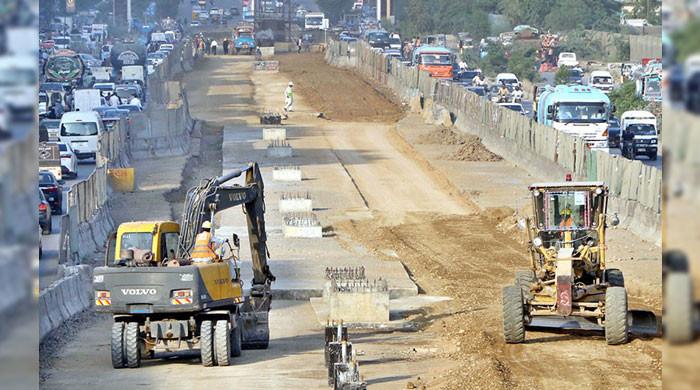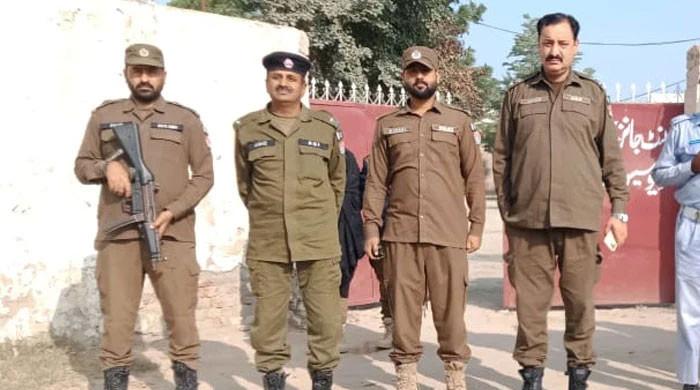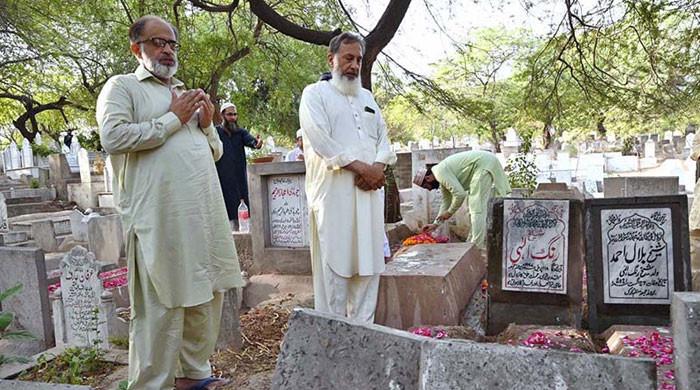KARACHI: Over the past decade the Pakistan Peoples Party’s (PPP) Sindh government has used only 2.87 per cent of the total development budget allocated to its energy department.
Between 2015-16 and 2023-24 the provincial government set aside Rs62.854 billion for various energy-related projects, including those under Foreign Project Assistance, meant to be implemented with donor support. However, budget records indicate that only Rs1.8 billion was spent.
To put this into perspective, the energy department’s total expenditure over the past 10 years was less than the Rs2.1 billion spent on a single flyover and underpass project in Karachi’s Gulistan-e-Jauhar.
Most of the energy department’s development projects since 2015-16 have focused on renewable energy and village electrification. Yet, according to the National Electric Power Regulatory Authority’s (Nepra) State of Industry Report 2023, only 12.5 per cent of Sindh’s total 16,940MW power generation capacity comes from renewable sources.
Sindh’s fuel-based power capacity stands at 14,821MW, while its renewable energy capacity is 2,119MW, comprising 24MW from biogas, 250MW from solar and 1,845MW from wind.A Nepra official said Sindh currently leads the country in renewable energy capacity. The federal Central Power Purchasing Agency’s 2023 report states that Pakistan’s total power capacity is 46,754MW, with renewable energy contributing 2,814MW: wind 1,842MW, solar 680MW and biogas 291.8MW.
Sindh accounts for approximately 75.3 per cent of the country’s total renewable energy capacity. However, figures may vary slightly due to differences in data sources.
As a signatory to the Paris Agreement under the United Nations Framework Convention on Climate Change, Pakistan has committed to reducing projected emissions by 50 per cent by 2030.
The country aims to generate 60 per cent of its electricity from renewable sources, convert 30 per cent of its vehicles to electric, and impose a complete ban on imported coal. Achieving these goals depends on the provincial governments allocating and utilising sufficient funds for renewable energy initiatives.
Energy department
The energy department oversees electricity generation and distribution in the province, including hydropower and thermal sources such as coal, gas and oil. It also regulates bulk supply rates and sets tariffs unless the Water and Power Development Authority has already established them. The department is also responsible for policy planning, approving power projects, and legislating on energy generation and distribution.
Operating under this department, the Directorate of Alternate Energy focuses on developing renewable energy sources, addressing provincial-level challenges, and facilitating investment in alternative energy projects.
In the 2024-25 budget, 22 of the 23 energy department projects are linked to renewable energy. While this highlights the government’s policy shift towards energy transition, actual spending and implementation remain slow.
Spending disparities
In its 2018 election manifesto the PPP pledged to prioritise renewable energy, and introduce policies to attract private investment. The party aimed to increase renewable energy’s share in the national energy mix to five per cent by 2023. By June 2023 renewable energy accounted for nearly six per cent of Pakistan’s total power capacity, with Sindh leading in contribution.
In 2015-16 Rs6.7 billion was allocated for energy projects, decreasing to Rs6.3 billion in 2016-17 and further dropping to Rs3 billion in 2017-18. The downward trend continued in 2018-19, with only Rs374 million allocated.
From 2019-20 onward, allocations increased: Rs2.3 billion in 2019-20, Rs4.3 billion in 2020-21, Rs7 billion in 2021-22, Rs7.1 billion in 2022-23 and Rs10.628 billion in 2023-24. The 2024-25 budget sets aside Rs15 billion for energy projects.
Despite these allocations, actual spending has remained inconsistent. The first recorded expenditure was Rs1.2 billion in 2015-16, primarily on the Village Electrification Programme Phase VII (Rs1 billion) and the Electrification of Goths in Karachi Phase VI (Rs200 million). These projects excluded areas under K-Electric’s jurisdiction.
In 2016-17 spending plummeted to Rs4.05 million, all directed towards electrifying primary health facilities through solar technology in Tharparkar, Sanghar, Shaheed Benazirabad, Umerkot, Kashmore and Qambar. This initiative received additional funds in 2017-18, raising the total expenditure to Rs6.806 million, and was expanded to more districts.
Spending remained stagnant in 2018-19, continuing on the same health facility electrification project. In 2019-20 expenditure increased to Rs53.134 million, largely allocated to the Sindh Solar Energy Project (SSEP), the first notable investment in a renewable energy initiative.
Solar energy project
The SSEP, a World Bank-funded initiative, was initially introduced in the 2017-18 budget as the Sindh Renewable Energy Development Project with an estimated cost of Rs2.3 billion. It was omitted from the 2018-19 budget but reinstated in 2019-20 with a revised cost of Rs12.848 billion.
Since 2019-20 spending on the project has gradually increased: Rs112.466 million in 2020-21, Rs164.917 million in 2021-22 and Rs269.3 million in 2022-23. Additionally, Rs334,000 was spent in 2022-23 on a feasibility study for the Sindh Domestic Biogas Programme. Spending details for 2023-24 are yet to be disclosed.
According to the Environmental and Social Management Framework report of the SSEP, the project aims to promote solar energy through large-scale solar farms, rooftop solar installations and household solar systems. The goal is to use government funding to attract long-term private investment and build local expertise in solar technology.
An SSEP official said solar parks are planned for Karachi’s District West, and Jamshoro, with land already allocated. He said that 33 hospitals in Sindh had been solarised under the project, and that 50,000 home solar systems had been ordered that are expected to arrive in Karachi by November 9. The initiative aims to provide solar systems to 200,000 households in underserved areas, benefiting around 1.2 million people.
Delays and promises
Despite these developments, progress has been sluggish. In his 2019-20 budget speech the Sindh chief minister promised 200,000 solar home systems for rural areas that year, a target yet to be achieved.
Similarly, the PPP’s 2018 manifesto projected that Sindh’s wind and solar parks would contribute at least 5,000MW to the national grid by 2023. However, the energy department has only secured land for solar projects, with no substantial generation added.
Moreover, the Sindh government frequently includes multiple energy projects in its budget without actual expenditure. In 2020-21 all spending was directed towards the SSEP, while three other schemes received no funding. In 2021-22 only one scheme was funded, leaving 20 other energy projects without investment.
Biogas potential
For over a decade the energy department’s alternative energy wing has struggled to develop biogas-based power with little success. An energy department official said that past biogas projects failed due to high costs, despite Sindh’s substantial biowaste potential, particularly in rural areas, noting that the dung from just two buffaloes can generate enough gas to sustain an eight-member househol
#Sindh #energy #dept #2.87pc #development #budget











